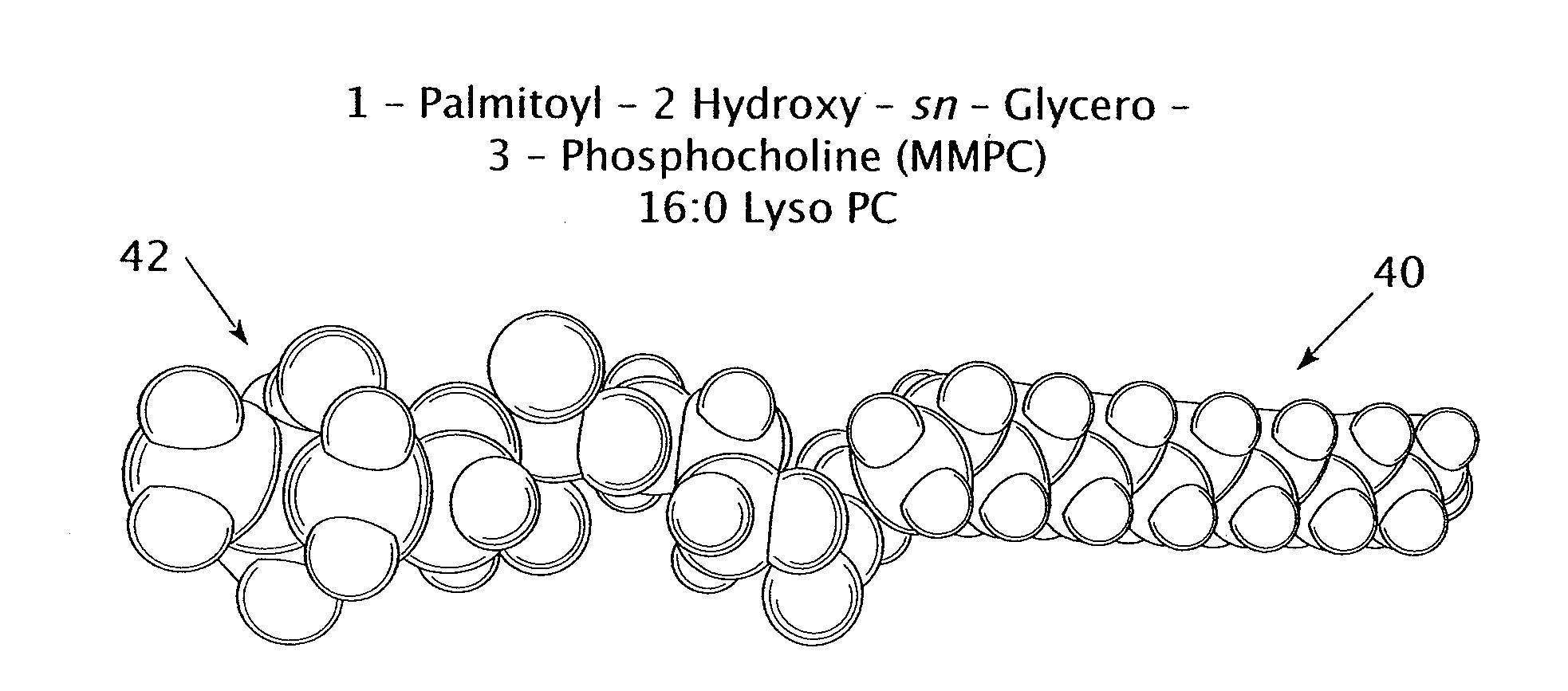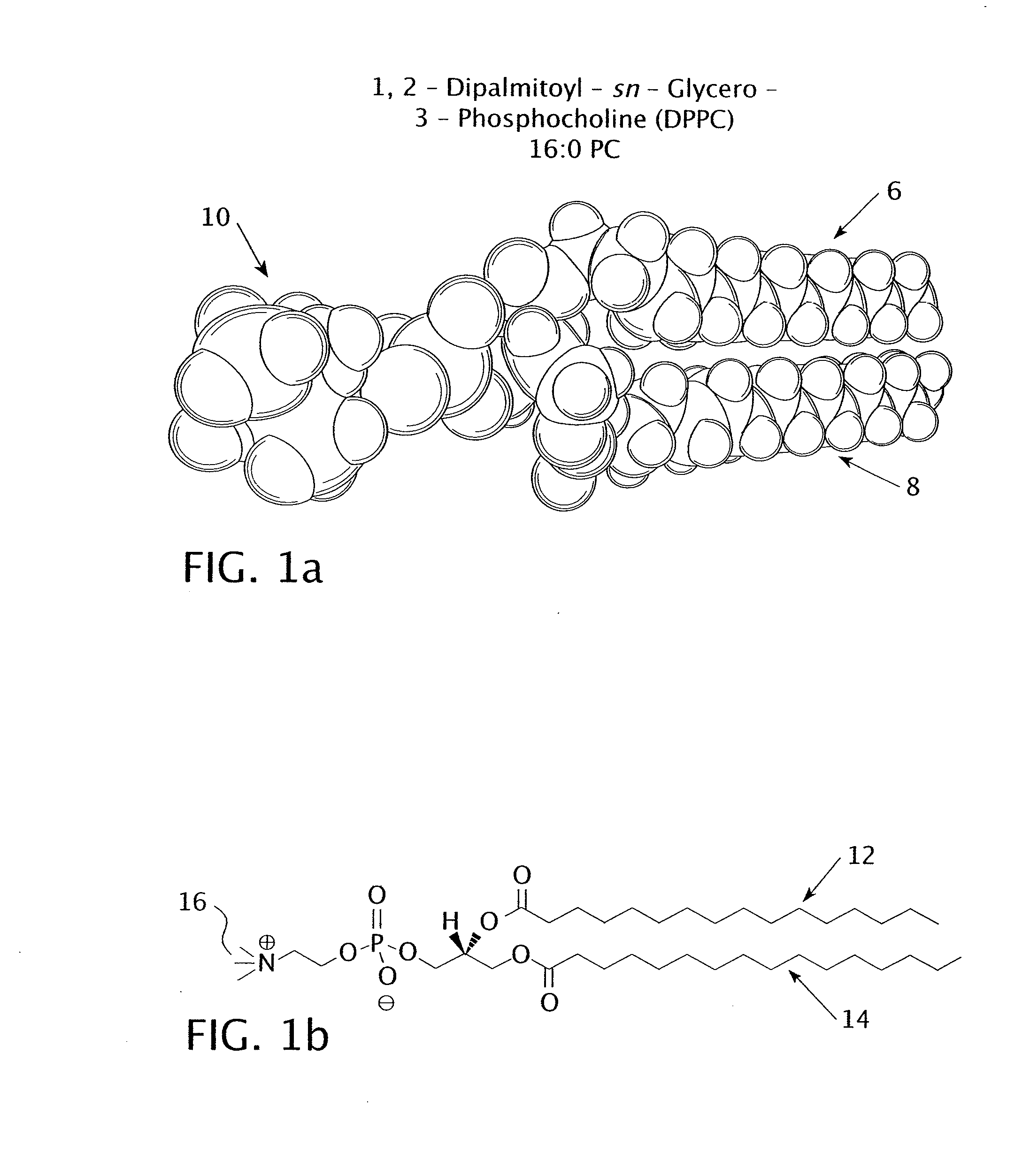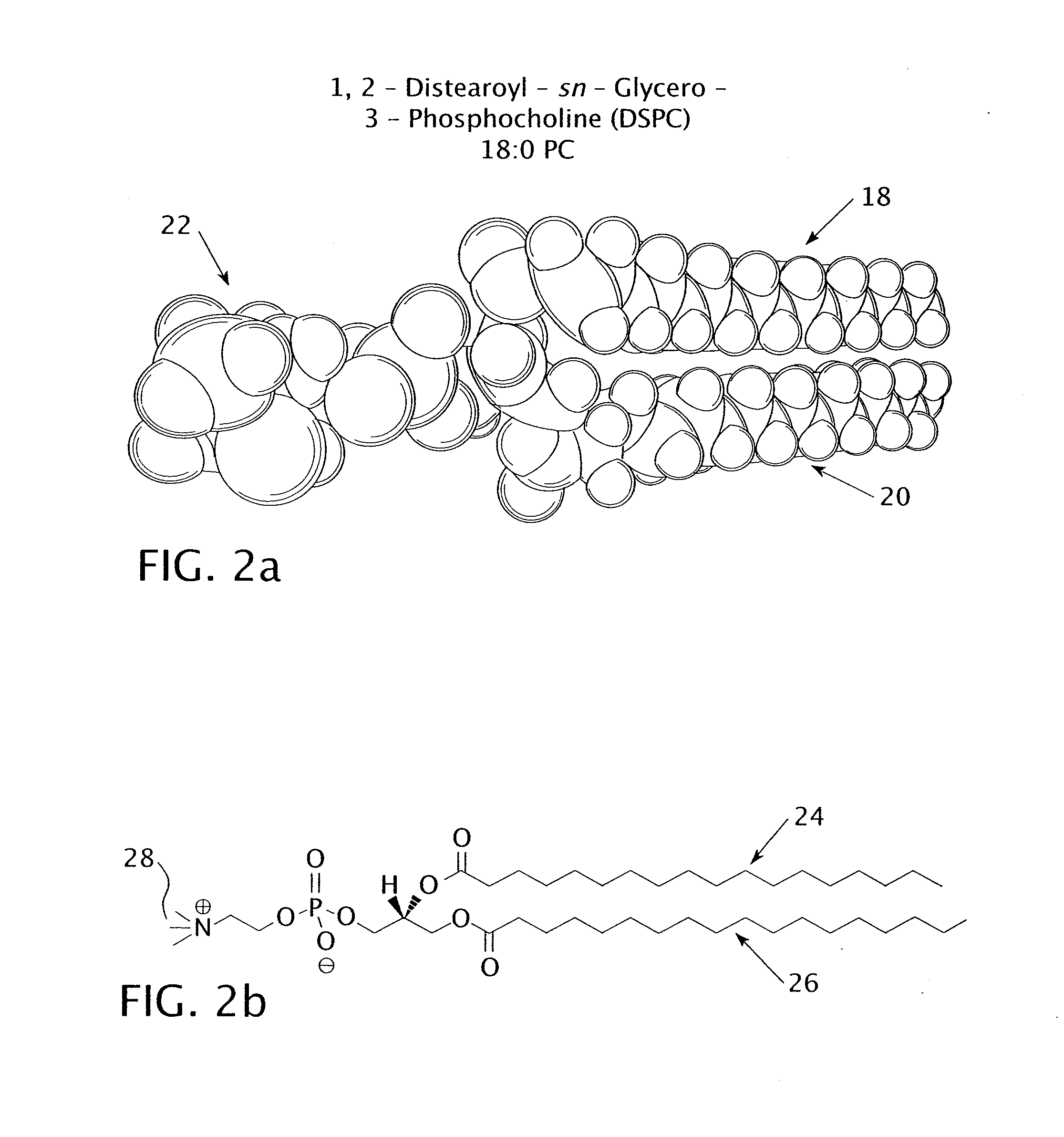Nanoparticles for Delivery of Therapeutic Agents Using Ultrasound and Associated Methods
a technology of nanoparticles and therapeutic agents, applied in the field of lipid-based nanoparticles or liposomes, can solve the problems of limited amount of active agents that can be delivered, inability to visualize the targeted region while at the same time controlling the release of payloads, etc., to reduce the time required for treatment, reduce the circulating level and amount of active agents, and reduce the effect of pharmaceutical production costs
- Summary
- Abstract
- Description
- Claims
- Application Information
AI Technical Summary
Benefits of technology
Problems solved by technology
Method used
Image
Examples
example 1
[0037]The experiment tested the percent release of encapsulated carboxyfluorescein from three different types of nanoparticles. The first type of nanoparticle included a DPPC bilayer with no lysolipid; the DPPC had a chain length of 16. The second type of nanoparticle included a DPPC and MMPC bilayer with a molar ratio of 95:5 DPPC to MMPC. The DPPC had a chain length of 16 and the MMPC had a chain length of 14, giving the bilayer a chain length difference of 2. The third type of nanoparticle included a DPPC and MPPC bilayer with a molar ratio of 95:5 DPPC to MPPC. The DPPC and the MPPC had identical chain lengths of 16 each.
[0038]The amount of liquid carboxyfluorescein released from the particles was measured using a fluorometer. The nanoparticles were injected in a thin (2 mm) closed transparent membrane containing 2.5 ml of nanoparticles mixed with a buffered solution. Control samples were reserved prior to ultrasonic visualization and insonation for measurement purposes. The clo...
example 2
[0040]The experiment tested the percent release of encapsulated carboxyfluorescein from three different types of nanoparticles. The first type of nanoparticle included a DSPC bilayer with no lysolipid; the DSPC had a chain length of 18. The second type of nanoparticle included a DSPC and MMPC bilayer with a molar ratio of 95:5 DPPC to MMPC. The DSPC had a chain length of 18 and the MMPC had a chain length of 14, giving the bilayer a chain length difference of 4. The third type of nanoparticle included a DPPC (16:0) and MPPC (16:0) bilayer with a molar ratio of 95:5 DPPC to MPPC. The DPPC and the MPPC had identical chain lengths of 16 carbon atoms each.
[0041]The amount of liquid carboxyfluorescein released from the particles was measured using a fluorometer. The nanoparticles were injected in a thin (2 mm) closed transparent membrane containing 2.5 ml of nanoparticles mixed with a buffered solution. Control samples were reserved prior to ultrasonic visualization and insonation for me...
example 3
[0043]The following protocol was used to prepare a particle encapsulating carboxyfluorescein as the active agent:
[0044]1. Dissolve a primary phospholipid and a lysolipid in a 10 mg / mL solution of chloroform, which assists in preventing the formation of lipid spheres.
[0045]2. Calculate the required volume of liquid required to form a lipid bilayer based on molar percentages. For example:
[0046]Total concentration of the (DPPC:MMPC) lipid in a 95:5:10 umoL
95 / 100*10=9.5 umoL
5 / 100*10=0.5 umoL
[0047]DPPC volume is: (9.5E-6 moL)*(734.05 g / moL)*(10 L / g)=697 uL
[0048]MMPC volume is: (0.5E-6 moL)*(467.58 g / moL)*(10 L / g)=23.3 uL
[0049]3. Pipette the calculated volumes of the primary phospholipid and lysolipid in a container, e.g., a round bottom flask.
[0050]4. Blow a thin stream of N2 gas into the flask for approximately 2 seconds.
[0051]5. Seal the flask with parafilm and store in a freezer at approximately −20 degrees Celsius.
[0052]6. Dry the lipid solution by blowing a thin stream of N2 gas int...
PUM
 Login to View More
Login to View More Abstract
Description
Claims
Application Information
 Login to View More
Login to View More - R&D
- Intellectual Property
- Life Sciences
- Materials
- Tech Scout
- Unparalleled Data Quality
- Higher Quality Content
- 60% Fewer Hallucinations
Browse by: Latest US Patents, China's latest patents, Technical Efficacy Thesaurus, Application Domain, Technology Topic, Popular Technical Reports.
© 2025 PatSnap. All rights reserved.Legal|Privacy policy|Modern Slavery Act Transparency Statement|Sitemap|About US| Contact US: help@patsnap.com



